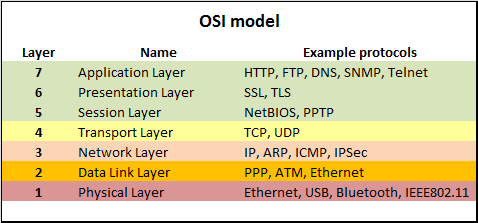OSI model
The following article contains a brief introduction to the OSI model and describes how it influences our everyday network communication. Please note that this article is not intended to supersede more detailed documentation on the subject, but only to provide an overview.
The OSI (Open Systems Interconnection) model describes the standardization of functions in a communication system via an abstract layer model. Each layer describes certain functions of communication between devices in the network. Each layer only communicates with the layer directly above or below it.

Sample: If you call up the address "http://www.beckhoff.com" with your web browser, the following protocols are used, starting from layer 7: HTTP → TCP → IP → Ethernet. If you enter "https://www.beckhoff.com", however, the protocols HTTP → SSL → TCP → IP → Ethernet would be used.
The TwinCAT 3 function TF6310 TCP/IP can be used to develop network-capable PLC programs that use TCP or UDP as the transport protocol. This allows PLC programmers to implement their own network protocols in the application layer and define their own message structure for communication with remote systems.